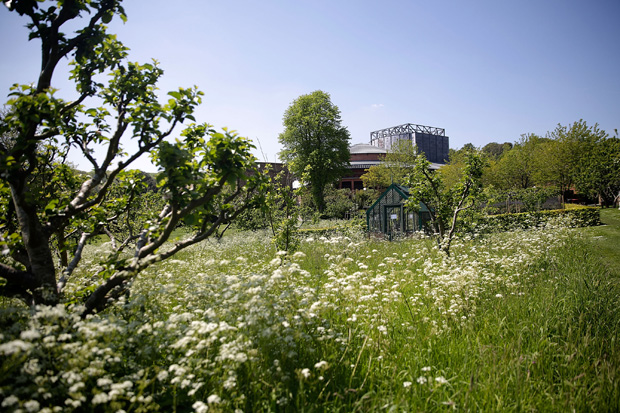I know little about human medicine: still less about the animal equivalent. So I had always assumed that vets were failed doctors, who had to make their living in muddy byres at 4 a.m., managing the cow through a difficult pregnancy while trying to avoid her hooves. The other evening, at a dinner party full of cat owners, I heard an entirely different version. Everyone had horror stories about the cost of cat medicine. The winner was a girl whose moggy’s treatment had cost over £1,000, including the price of three days in a cat hospital.
There had been an uncovenanted benefit. When Daphne came home, she displayed gratitude, or at least catitude. If that became known in feline circles, she would be in trouble. Every kitten receives the same instruction from her mother: ‘Remember: dogs have owners, we have staff. If you hand out compliments when they are only doing their duty, you’ll spoil them.’
All these cats had health insurance. (Have insurance companies’ shares been sufficiently discounted?) But another friend of mine had failed to take that precaution. Richard, who lives in Derbyshire, spends a lot of his week with the Southron folk. When he arrives back on Friday evening, the weekend begins with a ritual. His wife pours him a pint of gin and tonic. Recently, halfway through the tipple, gently unwinding, he received a rude shock. One of the cats had been injured and it would cost £3,000 to put right. Being a robust northerner, Richard would think it barely justifiable to spend that much on an ailing wife. A cat: surely not. He put his case. It did not find favour. His wife is also from the north. Do not let anyone claim that there is no sentimentality north of Watford. The moggy was mended.
From north to south, England has so many landscapes, each with its own allure. If you want to capture the gentle, pastoral, domesticated beauty — the dearest freshness — of southern England, it is hard to do better than Glyndebourne. That said, there is one blot: a wind turbine, looking as if it had escaped from Wells’s War of the Worlds. The Christie family are among the greatest benefactors of modern times. But there has obviously been a leftie somewhere in the bloodline. Let us hope that the genius loci will somehow take animate form and commit a most noble act of sabotage.
There has been a less noble act of sabotage, to the production of Figaro, which has been hammed up since I last saw it three years ago. The Count was played as a sulky celeb. On arrival, he embraces Figaro: no, no. The sublime music of the overture was disrupted by spring cleaning; the equally sublime marriage music by far too much galumphing. There ought to be a contrast in dancing styles. The Count and Countess must express formality, aristocracy and stress. The other couples, freed from the threat of jus primae noctis, should be full of artless charm and innocence, as if proving the Count’s point: it is easier for his servants to find happiness than it is for him. In this year’s version, contrast and subtlety were both lost as choreography broke down and the stage was full of pointless activity.
Equally, the undressing of the page should have been sexier, the Count lacked menace and Figaro had insufficient stage presence. Though it should be no more than a suggestion, there ought to be a hint of jacquerie: se vuol ballare. But the principal girls were superb: Susannah, up there with Beatrice, Kate and Rosalind: the great Shakespearean minxes. At the end, the Countess was Marschallin-like in her dominance.
In the garden, the glorious summer sky gradually gave way to a wondrous moon: Constable transformed into Caspar David Friedrich. With all this, we drank Pol Roger, in quantity, while the enchanted music coursed through the bloodstream. This was England, and Arcadia.
The post Felines and Figaro appeared first on The Spectator.
Got something to add? Join the discussion and comment below.
Get 10 issues for just $10
Subscribe to The Spectator Australia today for the next 10 magazine issues, plus full online access, for just $10.
You might disagree with half of it, but you’ll enjoy reading all of it. Try your first month for free, then just $2 a week for the remainder of your first year.















Comments
Don't miss out
Join the conversation with other Spectator Australia readers. Subscribe to leave a comment.
SUBSCRIBEAlready a subscriber? Log in